The global office supplies market is not only steady—it’s evolving with modern work trends. According to industry reports, the office supplies sector was valued at over $150 billion globally in 2024 and is projected to grow at a steady pace of 4–5% annually through 2028. In the United States alone, spending on home and corporate office supplies reached $15.8 billion in 2024, showing strong resilience even as companies shift to digital solutions.
Several factors make this category especially attractive for dropshipping in 2025:
-
Hybrid Work Boosts Demand
With over 28% of the US workforce working remotely at least part-time, the need for home office upgrades continues to rise. Employees are investing in ergonomic chairs, laptop stands, and organizational tools to improve productivity from home. -
Recurring Purchases Drive Consistency
Everyday consumables such as pens, notebooks, planners, and printer paper remain essentials. Unlike one-time purchases, these products ensure repeat orders—a key factor for long-term dropshipping success. -
Growth in Premium and Eco-Friendly Segments
Eco-conscious buyers are influencing the market: sales of eco-friendly stationery and sustainable office supplies grew by 9% year-on-year in 2024. Similarly, ergonomic furniture like standing desks and adjustable chairs has become a multi-billion-dollar subcategory, offering dropshippers higher profit margins. -
Low Returns, High Reliability
Unlike fashion or electronics, office supplies have lower return rates since sizing, compatibility, and style mismatches are less frequent. This reduces operational stress for new dropshippers.
Unlike seasonal fads, office supplies represent consistent buying behavior, which is critical for building a reliable online business. With the right suppliers and marketing strategies, newcomers can enter the market with confidence, while experienced sellers can scale by diversifying their catalog and positioning themselves around modern work trends.

Key Factors Driving Office Supplies E-Commerce in 2025
The steady rise of office supplies in the e-commerce world is not only about necessity—it’s about how modern shopping behaviors and workplace changes reshape demand. Before diving into the specific products, it’s worth understanding the broader forces pushing this category forward:
-
Digitalization of Procurement
Businesses, freelancers, and schools are shifting away from bulk purchases at traditional wholesalers to online platforms that offer flexible, on-demand buying. Dropshippers benefit from this shift, as more buyers expect fast and convenient e-commerce solutions. -
Personalization and Niche Branding
Instead of generic pens and paper, customers increasingly seek stylish, personalized, or branded stationery that reflects their identity or corporate culture. Dropshippers can leverage this by offering customizable office products or bundling complementary items. -
Influence of Social Media and Work-Life Content
TikTok and Instagram have popularized “aesthetic desk setups” and workspace inspiration content, driving demand for minimalist desk accessories, organizers, and visually appealing tools. This trend is especially strong among younger professionals and students. -
Growing Small Business Ecosystem
In the US, 33.3 million small businesses operated in 2025, and many rely on affordable online suppliers for office essentials. This segment is a goldmine for dropshippers who can serve B2B buyers as well as individual consumers. -
Sustainability as a Purchase Driver
Over 60% of US consumers in 2024 reported being more likely to buy from eco-conscious brands. Offering recycled notebooks, refillable pens, or bamboo office accessories can create a competitive advantage in an otherwise crowded market.
By understanding these drivers, dropshippers can position their store to capture not only everyday demand but also the new value-based consumer expectations shaping this category.
Top 15 Office Supplies Dropshipping Products
1. Ergonomic Office Chairs
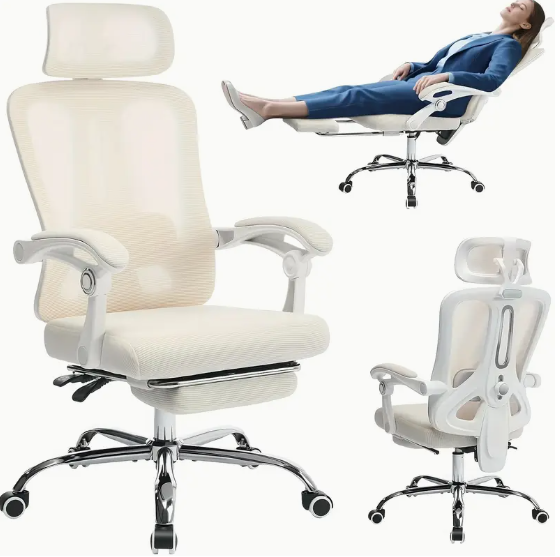
Why It Sells: Office workers and students spend long hours sitting, and ergonomic chairs improve posture and reduce back pain. Comfort is increasingly seen as a productivity tool.
Trend Factor: With 28% of US employees working remotely part-time in 2025, ergonomic furniture demand is at an all-time high.
Profit Potential: Average selling price is $200+, with margins of $60–$100 per order, putting these firmly in the high-ticket category.
Store Strategy Tip: Position ergonomic chairs as a health investment rather than just furniture. Bundle with back cushions or footrests for added value.
2. Standing Desks
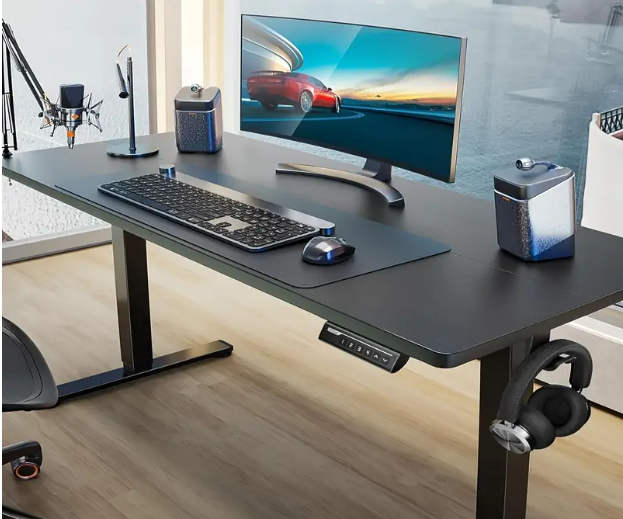
Why It Sells: Standing desks reduce sedentary habits and improve energy levels throughout the day.
Trend Factor: Studies show standing desk users report 15% higher productivity, fueling consistent adoption in both home and corporate offices.
Profit Potential: Retail prices average $250–$400, leaving room for 20–25% margins.
Store Strategy Tip: Highlight health benefits in product descriptions and consider offering multiple sizes to appeal to both individuals and businesses.
3. Wireless Keyboards and Mice
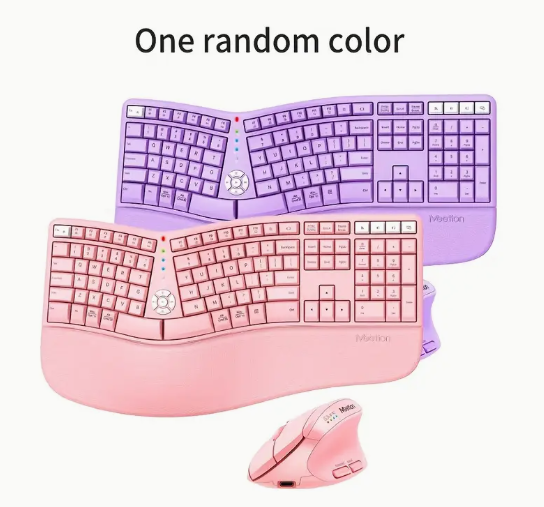
Why It Sells: Wireless peripherals provide flexibility and declutter modern desk setups.
Trend Factor: Amazon searches for “wireless mouse” and “keyboard” remain consistently high, reflecting consumer preference for sleek, portable work tools.
Profit Potential: Wholesale costs are low, while retail prices range $40–$100, giving 25–40% margins.
Store Strategy Tip: Offer combo bundles (keyboard + mouse + mouse pad) to increase order value.
4. Noise-Cancelling Headphones

Why It Sells: Hybrid work and online meetings demand clear audio and focus-friendly tools.
Trend Factor: Both remote professionals and creators fuel the rise of premium headphones, with search volume up year-over-year.
Profit Potential: Profit per order often ranges from $50–$100.
Store Strategy Tip: Target students, gamers, and remote workers with ads highlighting productivity and concentration.
5. LED Desk Lamps with Wireless Charging
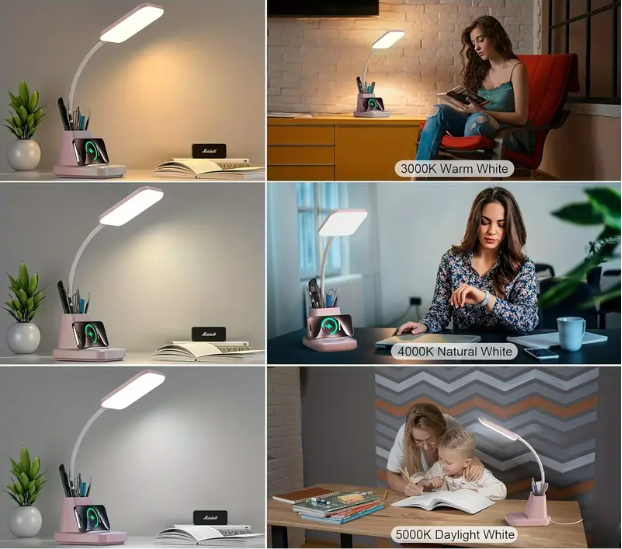
Why It Sells: Multifunctional products save space and provide modern convenience.
Trend Factor: Aesthetic desk setups on TikTok and Instagram make these lamps highly shareable.
Profit Potential: Retail $60–$120, margins around 30%.
Store Strategy Tip: Showcase “workspace makeover” visuals to emphasize design appeal.
6. Monitor Stands and Risers
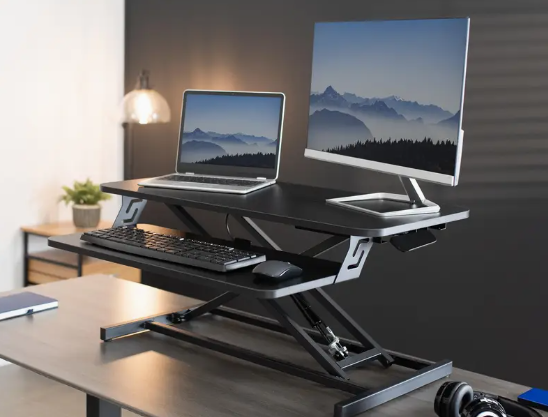
Why It Sells: Affordable ergonomic solutions that improve viewing angles and desk organization.
Trend Factor: Rising interest in productivity hacks and home office aesthetics drives steady demand.
Profit Potential: Lightweight products with margins of 35–40%.
Store Strategy Tip: Sell as add-on items alongside monitors or keyboards to increase cart value.
7. Cable Management Kits
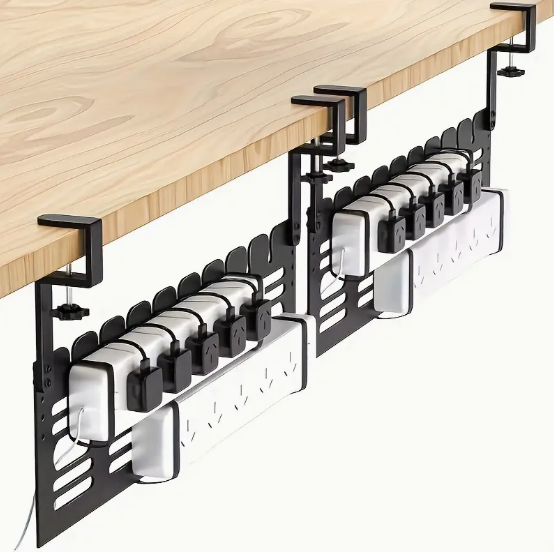
Why It Sells: Tidy desks improve focus and create a professional look.
Trend Factor: “Cable management” hashtags trend across TikTok and YouTube desk setup content.
Profit Potential: Low sourcing cost, margins up to 60%.
Store Strategy Tip: Sell in bundles and advertise with before-and-after transformation imagery.
8. Printer Ink and Toner

Why It Sells: Essential consumables for schools, businesses, and freelancers.
Trend Factor: Despite digitalization, printers remain widely used; consumables mean recurring orders.
Profit Potential: Lower margins (10–20%), but high repeat-purchase rates.
Store Strategy Tip: Position as a subscription model—offer auto-refill deals to secure long-term customers.
9. Multi-Function Printers

Why It Sells: Compact, all-in-one solutions combine printing, scanning, and copying.
Trend Factor: Popular among small businesses and home offices, especially in hybrid work environments.
Profit Potential: High-ticket products with $70–$120 profit per sale.
Store Strategy Tip: Bundle with ink refills or paper packs to create recurring upsell opportunities.
10. Stationery Sets
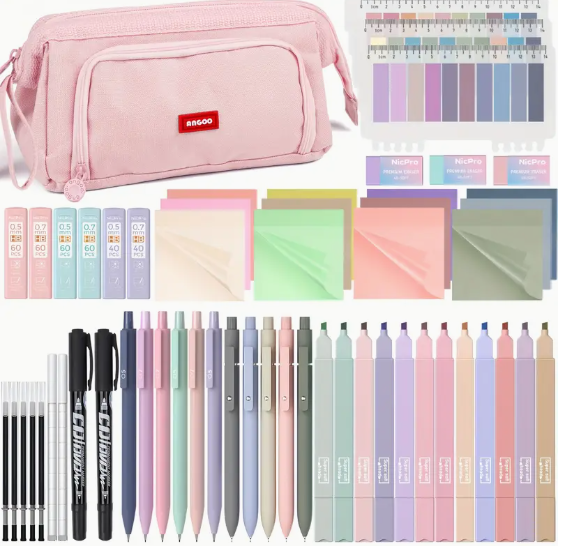
Why It Sells: Evergreen demand across students, professionals, and gift buyers.
Trend Factor: Social media trends (study setups, planners) make stationery highly marketable.
Profit Potential: Low sourcing cost, high markups with curated bundles.
Store Strategy Tip: Create theme-based sets (study kits, office starter packs) for differentiation.
11. Desk Organizers

Why It Sells: Helps maintain order in workspaces, appealing to both function and style.
Trend Factor: Influencer desk setup tours drive demand for stylish organizers.
Profit Potential: Margins often 40–50%.
Store Strategy Tip: Market as part of home office aesthetic collections, not just utility items.
12. Whiteboards and Cork Boards
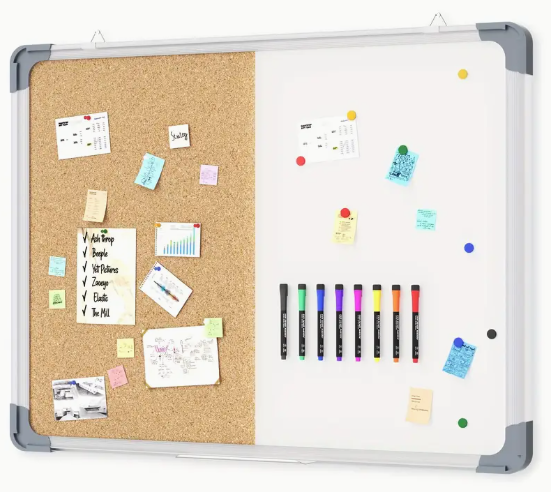
Why It Sells: Essential for planning, brainstorming, and hybrid learning setups.
Trend Factor: Remote learning and small office setups keep demand steady.
Profit Potential: Lightweight shipping, strong bundle potential with markers and pins.
Store Strategy Tip: Sell as complete sets to maximize convenience and margins.
13. Paper Shredders
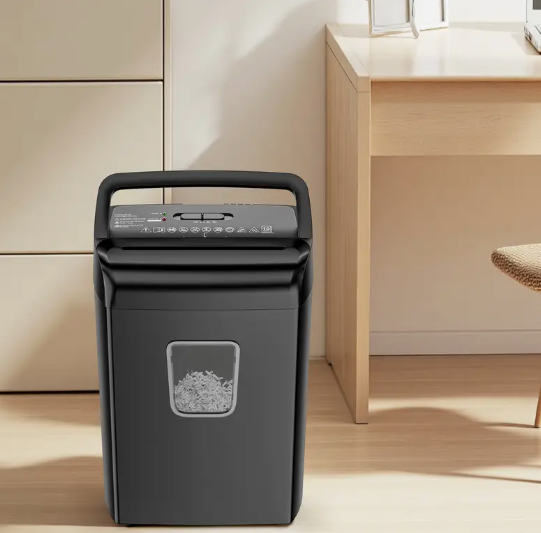
Why It Sells: Growing concerns over identity theft and data privacy laws.
Trend Factor: Small businesses continue to purchase shredders as part of compliance practices.
Profit Potential: $40–$60 profit per unit.
Store Strategy Tip: Target niches like legal, finance, and small enterprise customers.
14. Filing Cabinets and Storage Solutions

Why It Sells: Essential for physical storage, especially in compact workspaces.
Trend Factor: Rising number of home-based businesses fuels steady demand.
Profit Potential: High-ticket items with $80–$150 profit potential.
Store Strategy Tip: Position as space-saving solutions for small apartments or home offices.
15. Blue Light Blocking Glasses

Why It Sells: Increasing screen time makes eye protection a daily necessity.
Trend Factor: Screen wellness is a growing consumer concern among students and professionals.
Profit Potential: Margins as high as 60–70%.
Store Strategy Tip: Market as stylish and health-focused accessories, not just utility products.
Where to Source Office Supplies Reliably
Sourcing the right office supplies is one of the most important steps in building a sustainable dropshipping business. Office products are everyday essentials, and customers expect not only affordability but also consistent quality and timely delivery. Choosing suppliers should therefore balance price with reliability, logistics, and the ability to adapt to market trends.
Wholesale Marketplaces
Large B2B marketplaces provide access to thousands of products at competitive prices. They work well for sellers who already know how to handle negotiations and bulk orders. For beginners, however, filtering suppliers, managing product quality, and dealing with long lead times can be overwhelming.
Specialized Office Supply Wholesalers
Some wholesalers focus specifically on office supplies and carry established brands. These partners typically offer higher reliability and product authenticity, making them ideal for stores targeting small businesses or freelancers who want trusted products. The tradeoff is usually slightly higher pricing, but the long-term trust gained often outweighs the cost.
Dropshipping Platforms with Built-In Fulfillment
For sellers who want to test products without holding stock, dropshipping-focused platforms provide an easier entry point. A good example is CJdropshipping, which supports sellers with:
-
A wide catalog of office supplies, covering everything from stationery to ergonomic desk accessories.
-
On-demand product sourcing, useful when a trending or niche item isn’t available in the main catalog.
-
Fast fulfillment options through warehouses in the US and Europe, helping deliver office products to customers within days rather than weeks.
-
Custom packaging and branding services, which strengthen store identity and build customer loyalty.
With this type of solution, the seller can focus on building the brand and scaling sales, while product sourcing and order fulfillment are handled in the background.
Final Note on Choosing Sources
The best partner is not necessarily the cheapest one. A reliable supplier ensures product quality, smooth logistics, and customer satisfaction, which are ultimately the keys to sustainable growth in the office supplies niche.
Why choose office supplies dropshipping as a niche
Here’s why office supplies are a compelling niche for dropship sellers:
1. Predictable, recurring demand
Businesses and remote workers continually consume paper, ink, and desk items. Seasonal spikes exist (back-to-school, Q1 restocking), but demand is reasonably stable year-round.
2. Low entry cost and small SKUs
Most office items are small and inexpensive to store/ship. That keeps returns and inbound logistics simple—ideal for testing products without big capital outlay.
3. High customer lifetime value (CLTV) opportunity
Consumables and workplace kits invite subscriptions and recurring orders. Convert a one-time buyer into a monthly subscriber for consistent revenue.
4. Wide audience segmentation
You can sell to students, creatives, remote professionals, startups, and procurement managers. That allows targeted messaging across platforms (Instagram for aesthetics, LinkedIn for B2B procurement).
5. Easy bundling to increase AOV
Bundle low-ticket items into curated kits (starter office kit, meeting pack) to increase average order value and improve ad ROI.
6. Room for differentiation
Design-led items (luxury notebooks, ergonomic accessories) can command premium prices. Private-label or POD branded stationery gives differentiation against commodity sellers.
7. Cross-sell & upsell potential
Accessories pair naturally: a premium notebook + matching pen, or a monitor stand + cable management kit. Upsells raise margins without large acquisition costs.
Pricing strategy for office supplies dropshipping products
Pricing gets you customers, but the right pricing strategy makes you profitable. Below are practical approaches and rules of thumb tailored to office supplies.
1. Know your full landed cost
Before pricing, calculate the true landed cost per SKU:
Product cost + shipping (to customer) + platform fees (Shopify, Amazon) + payment processing + returns estimate + packaging/branding + per-order marketing allocation.
Always include both variable and fixed allocations per order (e.g., ad spend per sale).
2. Pricing models to consider
Cost-plus (baseline)
A straightforward formula: Retail Price = Landed Cost × Markup.
-
For commodity consumables (paper, staples, basic pens) use 2.0–2.5× markup (100–150% markup), targeting 30–40% gross margin after fees and shipping pressures.
-
For mid-range accessories (notebooks, organizers) use 2.5–3× markup to aim for 40–55% gross margin.
-
For premium/design items (ergonomic chairs, custom brand products), you can price 3–5× depending on perceived value, aiming for 50–65% gross margin.
Value-based pricing
Charge based on the benefit or problem solved rather than pure cost. Example: an adjustable laptop stand that reduces neck pain can command a higher price than a generic stand. This is ideal for ergonomic products and premium desk gear.
Competitive pricing (dynamic)
Monitor competitors and marketplaces (Amazon, Staples, Office Depot). Use repricing or dynamic pricing tools when competing on price-sensitive SKUs. Don’t be the cheapest by default—compete on shipping speed, bundles, or better service.
Psychological pricing & tiers
-
Use $0.99 endings for impulse items.
-
Offer three price tiers (Basic / Pro / Deluxe) to steer customers to the mid-range “pro” option.
-
Create subscription discounts: e.g., “15% off on monthly ink deliveries.”
3. Bundles and subscriptions: your margin multipliers
-
Kits: Combine consumable + accessory (e.g., printer ink + microfiber cloth + discounted paper) at a 15–30% premium over single SKUs. Kits reduce per-order shipping cost relative to itemized buys and increase perceived value.
-
Subscription plans: For recurring items (ink, paper, toner, sticky notes), offer monthly or quarterly subscriptions at 10–20% off, with auto-renew. Subscriptions increase CLTV and stabilize cashflow.
4. Free shipping thresholds
Use free shipping as a conversion tool but protect margins: set thresholds like Free shipping over $49–79 depending on average order value and net margins. For low-ticket SKUs, a $49 threshold forces upsells.
5. Promotions & discounts
-
Avoid blanket 50% off on consumables; it trains price-sensitivity.
-
Use limited-time bundles, first-time buyer discounts, and referral credits.
-
Seasonally discount back-to-school packs, end-of-year office refresh bundles.
6. B2B vs B2C pricing
For B2B (bulk orders), offer tiered pricing by volume (e.g., 10–49 units: 5% off, 50–199: 15% off, 200+: 25% off). Factor in longer payment terms and potential returns.
7. Track unit economics (must metric)
Maintain a simple dashboard per SKU:
-
CAC (customer acquisition cost)
-
AOV (average order value)
-
Gross margin per order
-
Payback period (days to recover CAC)
If CAC > margin contribution, pause ads or adjust pricing/bundles.
Marketing channels and tactical playbook
-
Google Shopping / Search: perfect for intent-driven buyers (printer ink refill, legal pads). Optimize product feed (brand, GTIN, accurate shipping times).
-
Amazon & eBay: list consumables and branded packs. Use Fulfilled by Merchant (FBM) or FBA for higher visibility. Watch policy for dropshipping.
-
Shopify store + Google Ads / Meta Ads: use lifestyle images for desk accessories and problem-solution ads for ergonomic products.
-
LinkedIn (B2B): promote bulk deals, facility refresh packages, or corporate gifting. Target office managers and procurement roles.
-
TikTok & Instagram (B2C): stationery aesthetics, desk organization hacks, and “unboxing” reels drive impulse buys—great for premium notebooks and desk décor.
-
Email & Retargeting: recover carts and upsell consumables with timed triggers (“Out of ink? Reorder now.”).
-
SEO & Content: create “best practice” guides (setup home office, how to choose ink) to attract organic traffic. Use long-tail keywords and schema for product pages.
Operations & supplier considerations
-
Choose suppliers with product data feeds and API/Shopify integration to automate order flows and inventory sync.
-
Have a backup supplier per SKU to avoid stockouts.
-
Confirm returns and warranty policies—you’re the seller of record and must manage customer service.
-
Avoid restricted items: certain cleaning supplies or electronics batteries may have special shipping rules.
-
White-label & POD partners: Use them for branded notebooks, pens, or mousepads—ask about MOQ and mockups. CJdropshipping, Spocket, and US-based POD suppliers are common options.
Tips for Selling Office Supplies Successfully Online
Selling office supplies might look straightforward, but success often depends on execution details. Since these products serve both businesses and individuals, your strategy needs to balance broad appeal with niche focus. Here are some actionable tips to help beginners grow consistently:
Understand Your Audience
Office supplies aren’t limited to corporate buyers anymore. Remote workers, freelancers, students, and even home-office hobbyists contribute heavily to the market. Before setting up a store, define which audience segment you want to serve. For example, a freelancer-friendly shop might highlight affordable stationery bundles, while a premium store could focus on ergonomic chairs and branded desk organizers.
Prioritize Fast Delivery
Buyers of office supplies often purchase out of necessity—think ink cartridges, notebooks, or work-from-home accessories. A long shipping wait could lead to cart abandonment. Leveraging suppliers with local or regional warehouses makes a difference here, especially in the US and Europe, where same-week delivery is often expected.
Bundle Low-Cost Products
Margins on smaller items like pens or sticky notes can be slim. One proven approach is to sell them in bundled packs or create curated kits (e.g., a “back-to-school office starter kit”). Bundling not only raises your average order value but also gives customers a sense of added value.
Differentiate With Branding
Even in a competitive niche, branding can set your store apart. Custom packaging, consistent product imagery, and a professional store design make a strong impression. Sellers who use dropshipping services that allow private labeling or branded packaging can position themselves as more than just another reseller.
Watch Seasonal Trends
Sales for certain supplies spike during back-to-school seasons, tax seasons, and year-end planning cycles. Preparing marketing campaigns around these times ensures your store catches buyer demand at the right moment. For example, planners and calendars see higher demand between December and January, while pens, notebooks, and laptops peak in late summer.
Focus on Customer Service
Business buyers and freelancers rely on repeat purchases. Delivering smooth communication, quick order resolution, and accurate stock availability builds trust. Repeat orders are often easier and more profitable than chasing new customers every time.
Final Thoughts: Turning Everyday Work Tools into Steady Revenue
Office supplies may not sound glamorous compared to trending niches like tech gadgets or fashion accessories, but that’s exactly why they hold long-term value. These are everyday essentials—products people and businesses can’t function without. When you build a dropshipping store around them, you’re not just selling pens or planners, you’re tapping into a steady, recurring demand that keeps revenue flowing month after month.
The real opportunity lies in how you position your store. Instead of chasing the lowest price, focus on curation, convenience, and trust. If you can offer well-selected items, deliver them quickly, and present your brand as reliable, customers are far more likely to come back for repeat purchases. Over time, this steady cycle creates a business that doesn’t depend on sudden fads—it grows on consistency.
In 2025, with remote work still expanding and small businesses continuing to invest in efficient setups, the office supplies market offers a balance of stability and scalability. For beginners, it’s an accessible niche with products that don’t require complex marketing to explain. And for more experienced sellers, it provides the chance to build predictable revenue streams that support bigger business goals.
Think of it this way: while some dropshippers chase the next viral product, you could be building a business that thrives on everyday work tools—a niche that keeps selling quietly, but steadily, all year round.
